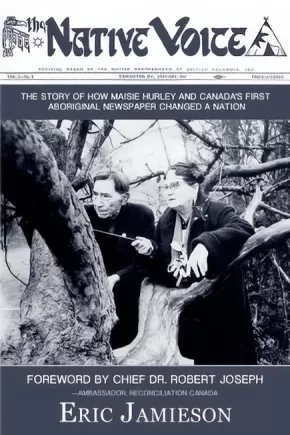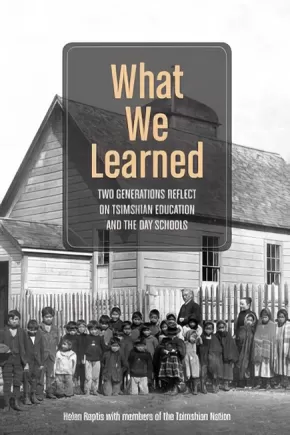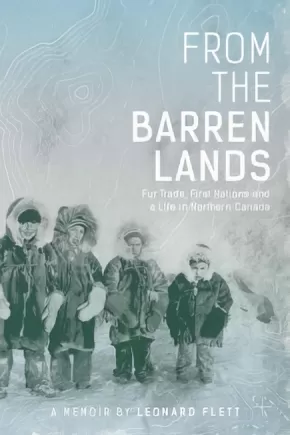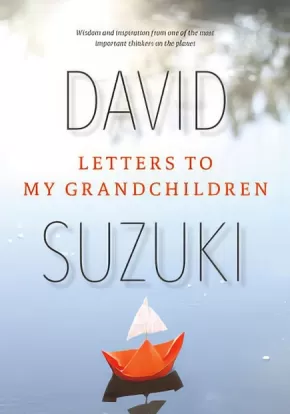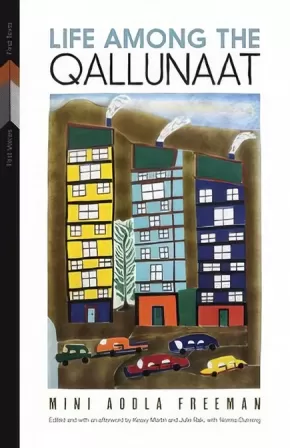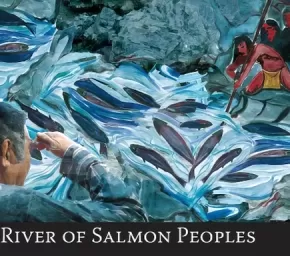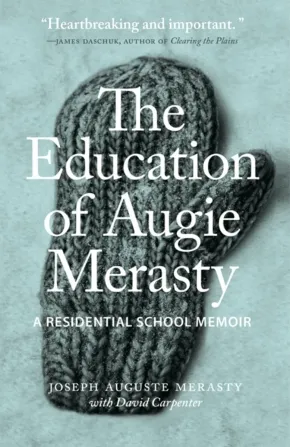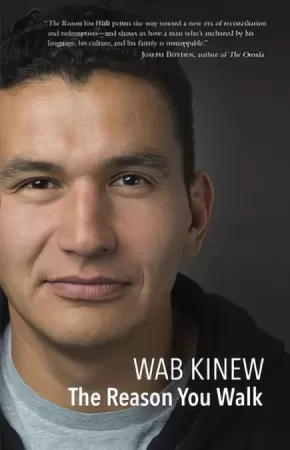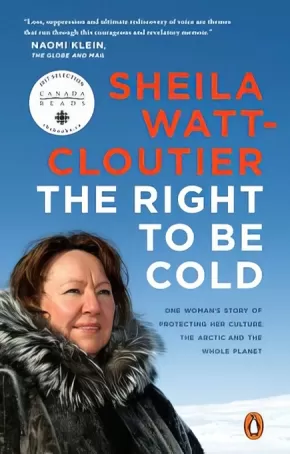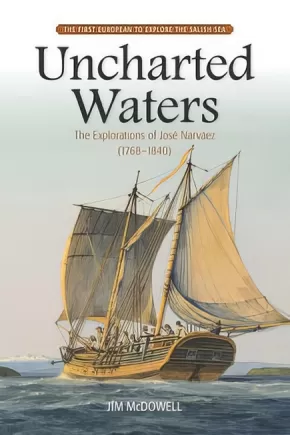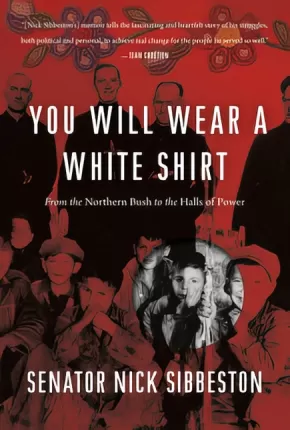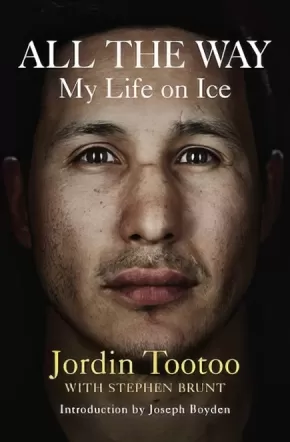Biographies
Synopsis:
In 1945, Alfred Adams, a respected Haida elder and founding president of the Native Brotherhood of British Columbia (NBBC), was dying of cancer. After decades of fighting to increase the rights and recognition of First Nations people, he implored Maisie Hurley to help his people by telling others about their struggle. Hurley took his request to both heart and mind, and with $150 of her own money, started a small newspaper that would become a powerful catalyst for change: THE NATIVE VOICE.At that time, the Welsh-born Hurley had been an advocate for First Nations clients in court. She did not have a law degree, but was graced with the courage and confidence to challenge all who stood in her way. When defending a First Nations woman accused of stealing a hotel clerk's wallet, she seared the hapless plaintiff with such a withering cross examination that his off-colour rejoinder earned him a night in jail for contempt after he refused to pay the fine. After Hurley launched THE NATIVE VOICE, it became the official newspaper of the NBBC, one of the largest democratic First Nations organizations in the country, but she continued to serve on the editorial board as publisher and director for many years without remuneration.
At a time when telecommunication was expensive and often inaccessible in Aboriginal communities, THE NATIVE VOICE reported relevant news and stories of everyday life to First Nations throughout the province, including hard-won rights such as the right to vote provincially (1949) and federally (1960). As the official publication of the NBBC, the VOICE chronicled both the realities of Aboriginal life and a vision for the future, enabling and inspiring overdue change in Canada. Maisie Hurley's dedication to improving the lives of those she referred to as my people" was honoured through several First Nations naming ceremonies by people of the Skeena, Squamish/North Vancouver and Comox areas.
The story of the NBBC, THE NATIVE VOICE and Maisie Hurley offer an inspiring testament to the power of cooperation and vision to create powerful change."
Additional Information
| 288 pages | 6.12" x 9.10" |
Synopsis:
The legacy of residential schools has haunted Canadians, yet little is known about the day and public schools where most Indigenous children were sent to be educated. In What We Learned, two generations of Tsimshian students – elders born in the 1930s and 1940s and middle-aged adults born in the 1950s and 1960s – add their recollections of attending day schools in northwestern British Columbia to contemporary discussions of Indigenous schooling in Canada. Their stories also invite readers to consider traditional Indigenous views of education that conceive of learning as a lifelong experience that takes place across multiple contexts.
Reviews
"Helen Raptis has written an important book about Tsimshian educational history. It is also a book about building research relationships with Indigenous communities. It is a work that recognizes, implicitly, that Indigenous history does not run in a straight line but is more liquid and circular. The journey to understand the Indigenous past requires deft canoe navigation through riptides and crosscurrents, past colonization’s half-submerged debris. Landing on the beach, one discovers no conventional separation between past, present, and future. There are only the stories—the stories and the sacred landscape." — Michael Marker, University of British Columbia, History of Education Quarterly, Vol. 57 No. 1, February 2017
Educator Information
Helen Raptis is an associate professor in the Faculty of Education at the University of Victoria. The members of the Tsimshian Nation are Mildred Roberts, Wally Miller, Sam Lockerby, Verna Inkster, Clifford Bolton, Harvey Wing, Charlotte Guno, Don Roberts Junior, Steve Roberts, Richard Roberts, Carol Sam, and Jim Roberts
Additional Information
224 pages | 6.00" x 9.00" | Paperback
Synopsis:
Charlie James (1867–1937) was a premier carver and painter from the Kwakwaka'wakw First Nation of British Columbia. Also known by his ceremonial name Yakuglas, he was a prolific artist and activist during a period of severe oppression for First Nations people in Canada.
Yakuglas’ Legacy examines the life of Charlie James. During the early part of his career James created works primarily for ritual use within Kwakwaka'wakw society. However, in the 1920s, his art found a broader audience as he produced more miniatures and paintings. Through a balanced reading of the historical period and James’ artistic production, Ronald W. Hawker argues that James’ shift to contemporary art forms allowed the artist to make a critical statement about the vitality of Kwakwaka'wakw culture. Yakuglas’ Legacy, aided by the inclusion of 123 colour illustrations, is at once a beautiful and poignant book about the impact of the Canadian project on Aboriginal people and their artistic response.
Synopsis:
This is a story about the fur trade and First Nations, and the development of northern Canada, seen and experienced not only through Leonard Flett's eyes, but also through the eyes of his father, grandfather, and great-grandfather.The lives of indigenous people in remote areas of northern Ontario, Manitoba and Saskatchewan in the 1960s and 1970s are examined in detail. Flett's successful career with both the Hudson's Bay Company and the North West Company provides an insight into the dying days of the fur trade and the rise of a new retail business tailored to First Nations.
Synopsis:
“The Gabriel Dumont Institute Press is pleased to be able to preserve and share Jeanne Pelletier’s work and life story through Let Me See Your Fancy Steps—Story of a Métis Dance Caller. The Story of Jeanne Pelletier as told to Sylvie Sara Roy and Wilfred Burton. Jeanne’s achievement as the first female Métis dance caller is, of course, about Métis dance, but it is also about the determination of a young Métis girl who achieves her dream to become a dance caller during a time when this was only done by men.”
This resource includes dance calls for 16 dances and is accompanied by the instructional DVD All My Relations which features dance company V’ni Dansi which is led by renowned dancer and artistic director, Yvonne Chartrand.
Reviews
"The recounting of Jeanne’s work is supplemented throughout the book by testimonials of her former dance students and community members, all of whom praise the dance caller for the substantial impact that she’s had both on their personal lives, as well as the academic and social climates of the Métis community in Saskatchewan. As a Métis myself, I feel lost at times, as if my culture is fuzzy or foreign to me. Reading the life experiences, knowledge, and not to mention the wealth of Métis Jig steps found in this book gave me an overwhelming sense of peace to see research of this caliber and this level of care being invested in my culture. I would highly recommend this book to anyone with an interest in Métis culture and the significance that the jig has to the culture. Anyone who has seen the Métis Jig performed live knows that it is a beautiful and awe-inspiring dance, but after reading Jeanne’s explanations of the cultural significance of the dances, I will now appreciate the dance that much more as a story and celebration of my culture. It is also worth mentioning that entire dance sequences are written out to follow with Jeanne’s notes, and the book includes an instructional DVD." - Ben Charles for SaskBook Reviews
Educator Information
Recommended by Gabriel Dumont Institute for Secondary/Post Secondary/Adult.
Includes a DVD.
Recommended in the Canadian Indigenous Books for Schools 2019-2020 resource list as being useful for grades 5-12 with regard to these subjects: English Language Arts, Physical Education, Social Studies, Teacher Resource.
Synopsis:
In his most important book since The Sacred Balance and his most personal ever, revered activist and thinker David Suzuki draws on the experiences and wisdom he has gained over his long life and offers advice, stories, and inspiration to his six grandchildren.
In these inspiring letters to his grandchildren, David Suzuki speaks personally and passionately about their future. He also explains why sports, fishing, feminism, and failure are important; why it is dangerous to deny our biological nature; and why First Nations must lead a revolution. He even has something to say about fashion.
His letters are also chockfull of stories about his own childhood and anecdotes about his children and grandchildren when they were small, providing an intimate look at Suzuki's life as a father and grandfather. Most of all, as he ponders life's deepest questions and offers up a lifetime of wisdom, Suzuki inspires us all to live with courage, conviction, and passion.
Synopsis:
Life Among the Qallunaat is the story of Mini Aodla Freeman’s experiences growing up in the Inuit communities of James Bay and her journey in the 1950s from her home to the strange land and stranger customs of the Qallunaat, those living south of the Arctic. Her extraordinary story, sometimes humourous and sometimes heartbreaking, illustrates an Inuit woman’s movement between worlds and ways of understanding. It also provides a clear-eyed record of the changes that swept through Inuit communities in the 1940s and 1950s.
Mini Aodla Freeman was born in 1936 on Cape Hope Island in James Bay. At the age of sixteen, she began nurse's training at Ste. Therese School in Fort George, Quebec, and in 1957 she moved to Ottawa to work as a translator for the then Department of Northern Affairs and Natural Resources. Her memoir, Life Among the Qallunaat, was published in 1978 and has been translated into French, German, and Greenlandic.
Educator & Series Information
Life Among the Qallunaat is the third book in the First Voices, First Texts series, which publishes lost or underappreciated texts by Indigenous writers. This reissue of Mini Aodla Freeman’s path-breaking work includes new material, an interview with the author, and an afterword by Keavy Martin and Julie Rak, with Norma Dunning.
Additional Information
304 pages | 5.50" x 8.50"
Synopsis:
An expression of the people, culture, ceremony and songs along the Fraser, River of Salmon Peoples captures what the Fraser River, and its most valuable resource, the salmon, means to First Nations communities along its basin. The result of nine community engagements, extensive research over two years, and illuminating photographs and artwork, this book includes the oral narratives of each community along the river. While capturing timeless Indigenous stories and legends about the salmon and the river, this book is also an exploration of the future of the salmon and waters of the Fraser River.
Authenticity Note: After a team of researchers gathered a wealth of information from and about the indigenous cultures along the Fraser River, Jeannette Armstrong and Gerry William co-edited River of Salmon Peoples.
Synopsis:
The Education of Augie Merasty offers a courageous and intimate chronicle of life in a residential school.
Now a retired fisherman and trapper, Joseph A. (Augie) Merasty was one of an estimated 150,000 First Nations, Inuit, and Metis children who were taken from their families and sent to government-funded, church-run schools, where they were subjected to a policy of "aggressive assimiliation."As Merasty recounts, these schools did more than attempt to mold children in the ways of white society. They were taught to be ashamed of their native heritage and, as he experienced, often suffered physical and sexual abuse.Even as he looks back on this painful part of his childhood, Merasty’s generous and authentic voice shines through.
Awards
- 2016 Burt Award Second Place Winner
Reviews
"At 86, Augie Merasty has been a lot of things: Father. Son. Outdoorsman. Homeless. But now he is a first-time author, and the voice of a generation of residential-school survivors.... The Education of Augie Merasty is the tale of a man not only haunted by his past, but haunted by the fundamental need to tell his own story... one of the most important titles to be published this spring." —Globe and Mail
"[Augie] wrote his memoir to show people the unbelievable atrocities suffered by so many Indigenous people and in the hope that others would come forward to tell their stories of what happened in the residential schools." —Eagle Feather News
"This book is so much bigger than its small size. It is a path to healing. We cannot change history, but we can acknowledge it, learn about it, and remember it." —Prairies North
"The Education of Augie Merasty might be a small book, but it carries a punch to it that all Canadian need to read and understand." —Rabble
"A truly extraordinary memoir by a truly extraordinary man." —Midwest Book Review
"Carpenter's introduction and afterword... allow us to come to better understand Augie's 'sometimes chaotic, sometimes heroic aftermath of his life,' as Carpenter describes his last decade. Where Augie focuses on physical scars, Carpenter's experiences with Augie illustrate the long-term impacts on his residential school experience. And with The Education of Augie Merasty, he helps Merasty--who could be any number of individuals we each pass on the street--find his voice." —Active History
"Unsettling and profound, and good." —Blacklock's Reporter
"In this book I have seen horror through eyes of a child." —James Daschuk, author of Clearing the Plains
"A story in which our entire nation has an obscure and dark complicity." —David Carpenter, co-author of The Education of Augie Merasty and author of The Gold and other books
Educator Information
The Canadian Indigenous Books for Schools list recommends this resource for Grades 9-12 English Language Arts and Social Studies.
Caution: Mature subject matter and descriptions of discrimination, sexual/physical violence, and substance abuse.
Additional Information
105 pages | 4.25" x 6.53" | Hardcover
Synopsis:
When his father was given a diagnosis of terminal cancer, Winnipeg broadcaster and musician Wab Kinew decided to spend a year reconnecting with the accomplished but distant aboriginal man who'd raised him. The Reason You Walk spans the year 2012, chronicling painful moments in the past and celebrating renewed hopes and dreams for the future. As Kinew revisits his own childhood in Winnipeg and on a reserve in Northern Ontario, he learns more about his father's traumatic childhood at residential school. An intriguing doubleness marks The Reason You Walk, a reference to an Anishinaabe ceremonial song. Born to an Anishinaabe father and a non-native mother, he has a foot in both cultures. He is a Sundancer, an academic, a former rapper, a hereditary chief, and an urban activist. His father, Tobasonakwut, was both a beloved traditional chief and a respected elected leader who engaged directly with Ottawa. Internally divided, his father embraced both traditional native religion and Catholicism, the religion that was inculcated into him at the residential school where he was physically and sexually abused. In a grand gesture of reconciliation, Kinew's father invited the Roman Catholic bishop of Winnipeg to a Sundance ceremony in which he adopted him as his brother. Kinew writes affectingly of his own struggles in his twenties to find the right path, eventually giving up a self-destructive lifestyle to passionately pursue music and martial arts. From his unique vantage point, he offers an inside view of what it means to be an educated aboriginal living in a country that is just beginning to wake up to its aboriginal history and living presence.
Invoking hope, healing and forgiveness, The Reason You Walk is a poignant story of a towering but damaged father and his son as they embark on a journey to repair their family bond. By turns lighthearted and solemn, Kinew gives us an inspiring vision for family and cross-cultural reconciliation, and a wider conversation about the future of aboriginal peoples.
Synopsis:
One of Canada's most passionate environmental and human rights activists addresses the global threat of climate change from the intimate perspective of her own Arctic childhood.
The Arctic ice is receding each year, but just as irreplaceable is the culture, the wisdom that has allowed the Inuit to thrive in the Far North for so long. And it's not just the Arctic. The whole world is changing in dangerous, unpredictable ways. Sheila Watt-Cloutier has devoted her life to protecting what is threatened and nurturing what has been wounded. In this culmination of Watt-Cloutier's regional, national, and international work over the last twenty-five years, The Right to Be Cold explores the parallels between safeguarding the Arctic and the survival of Inuit culture, of which her own background is such an extraordinary example. This is a human story of resilience, commitment, and survival told from the unique vantage point of an Inuk woman who, in spite of many obstacles, rose from humble beginnings in the Arctic to become one of the most influential and decorated environmental, cultural, and human rights advocates in the world.
Awards
- 2015 Ontario Historical Society Huguenot Society of Canada Award Winner
Reviews
"Loss, suppression and ultimate rediscovery of voice are themes that run through this courageous and revelatory memoir." —Naomi Klein, The Globe and Mail
"This is a book that needs to be read as the North becomes central to our future. It offers a perspective grounded in the culture and wisdom of northern people, seen through the lens of a remarkable woman as they seek to preserve 'The Right to be Cold.'" —Lloyd Axworthy, academic, former Minister of Foreign Affairs, and Nobel Peace Prize nominee
"This is a moving and passionate story from a committed woman who has bridged the ice age to the digital age. Her sophisticated views on the environment and the way the world works from her engaged involvement are brilliant and convincing." —The Right Honourable Adrienne Clarkson, journalist and former Governor General
Educator Information
This resource is also available in French: Le droit au froid: Combat d'une femme pour proteger sa culture, l'Arctique et la planete
Additional Information
|
Synopsis:
Jim McDowell's new biography of the little-known Spanish explorer José María Narváez, reveals his significant discoveries during the European exploration of what is now Canada's Pacific Northwest Coast. Narváez was the first European to investigate a Russian fur-trading outpost in the Gulf of Alaska in 1788. The following year he became the first Spaniard to reconnoitre Juan de Fuca Strait. In 1791, he charted the interiors of three large inlets on Vancouver Island's west coast, discovered a vast inland sea to the east (today's Salish Sea), mapped the entire gulf, located two prospective entrances to the fabled Northwest Passage, made first contact with Aboriginal peoples, and found the site of what became western Canada's largest city - Vancouver, British Columbia. Narvaez also undertook diplomatic missions around the Pacific Ocean, charted the waters of the Philippines, and engaged in the political upheaval that transformed New Spain into México between 1796 and his death in 1840.
Reviews
McDowell's biography is an eloquent and informed contribution to cultural diversity and accurate colonial history in what is now British Columbia." - BC BookWorld
Additional Information
300 pages | 6.00" x 9.00" | b&w photos
Synopsis:
Though less known today than contemporaries like Amundsen and Peary, Knud Rasmussen (18791933) was one of the most intriguing of the great early 20th century Arctic explorers. Born and raised in Greenland, and part Inuit on his mother's side, Rasmussen could shoot a gun and harness a team of sled dogs by the time he was eight. Nevertheless he was well versed in the civilized arts and came to exploration after failing to make a career as an opera singer in Europe. He was obviously more at home on the ice floes than the stage, and undertook some of the most astounding feats of endurance in the annals of polar exploration including his record-setting 18,000-mile "Great Sled Journey"the first to traverse the Northwest Passage by dogsled. More impressively, he travelled without the elaborate preparations and large support staffs employed by other explorers, surviving with only a few Inuit assistants and living off the land. He once explained his approach by saying, "[As a child] my playmates were native Greenlanders; from the earliest boyhood I played and worked with the hunters, so even the hardships of the most strenuous sledge-trips became pleasant routine for me."
Despite his extraordinary physical prowess, Rasmussen was one of the most intellectual of the great explorers, more interested in scientific study than glamorous feats, producing (among many other works) a ten-volume account documenting Inuit spirituality and culture, an accomplishment that earned him the title "the father of Eskimology."
In this first full-length biography, Stephen R. Bown brings Rasmussen's inspiring story to English readers in all its richness, giving White Eskimo the readability of a good novel.
Synopsis:
The compelling autobiography of Nick Sibbeston, residential school survivor and one of the North’s most influential leaders.
Growing up in a remote Northern community, Nick Sibbeston had little reason to believe he would one day fulfill his mother’s ambition of holding a career where he would “wear a white shirt.” Torn away from his family and placed in residential school at the age of five, Sibbeston endured loneliness, callous treatment and sexual assault by an older boy, but discovered a love of learning that would compel him to complete a law degree and pursue a career in politics.
As a young, firebrand politician, Sibbeston played an instrumental role during a critical moment in Northwest Territories politics, advocating tirelessly to support the economic and political development of First Nations people in the North, and participating in early discussions of the separation of Nunavut. Sibbeston’s career advanced in great strides, first as an MLA, then one of Canada’s first Aboriginal lawyers, then as a cabinet minister and eventually premier of the Northwest Territories. Finally, he was appointed to the Senate of Canada, where he continues to represent the people of Canada’s North, not least in advocating for the generations affected by residential school policies.
Although his years at residential school compelled Sibbeston to fight tirelessly for the rights of Aboriginal northerners, they also left a mark on his mental health, fuelling continual battles with anxiety, depression and addiction. It was only in later life that healing began to take place, as he battled his demons openly, supported not just by the medical community but also by his strong faith and the love of his wife and family.
Nick Sibbeston is a lawyer, distinguished member of the Northwest Territories (NWT) Legislative Assembly and a former premier. In 1970, Mr. Sibbeston was elected to a four-year term on the North West Territorial Council. And from 1979–91, he was elected to the NWT Legislative Assembly. Sibbeston has worked for the Government of NWT as Justice Specialist and as a Public Administrator for Deh Cho Health & Social Services and served four years on the Canadian Human Rights Panel/Tribunal. He is a current member of the Senate committees on Aboriginal Peoples, and Energy, Environment and Natural Resources. Mr. Sibbeston and his wife, Karen, live in Fort Simpson, NWT.
Additional Information
344 pages | 6.41" x 9.25"
Synopsis:
It seemed as though nothing could stop Jordin Tootoo on the ice. The captain of Canada's Under-18, a fan favorite on the World Junior squad, and a WHL top prospect who could intimidate both goalies and enforcers, he was always a leader. And when Tootoo was drafted by Nashville in 2000 and made the Predators out of camp in 2003, he became a leader in another way: the first player of Inuk descent to suit up in the NHL. The stress of competition in the world's top hockey league, the travel, the media, the homesickness—and the added pressure to hold one's head high as a role model not only for the young people of his hometown of Rankin Inlet but for the culture that had given him the strength and the opportunities to succeed—would have been more than enough to challenge any rookie. But Tootoo faced something far more difficult: the loss of his brother in the year between his draft and his first shift for the Predators. Though he played through it, the tragedy took its inevitable toll. In 2010, Tootoo checked himself into rehab for alcohol addiction. It seemed a promising career had ended too soon. But that's not the way Tootoo saw it and not the way it would end. As heir to a cultural legacy that included alcohol, despair, and suicide, Tootoo could also draw on a heritage that could help sustain him even thousands of miles away from Nunavut. And in a community haunted by the same hopelessness and substance abuse that so affected Tootoo's life, it is not just his skill and fearlessness on the ice that have made him a hero, but the courage of his honesty to himself and to the world around him that he needed to rely on others to sustain him through his toughest challenge. All the Way tells the story of someone who has traveled far from home to realize a dream, someone who has known glory and cheering crowds, but also the demons of despair. It is the searing, honest tale of a young man who has risen to every challenge and nearly fallen short in the toughest game of all, while finding a way to draw strength from his community and heritage, and giving back to it as well.
Additional Information
240 pages | 5.25" x 8.23"

